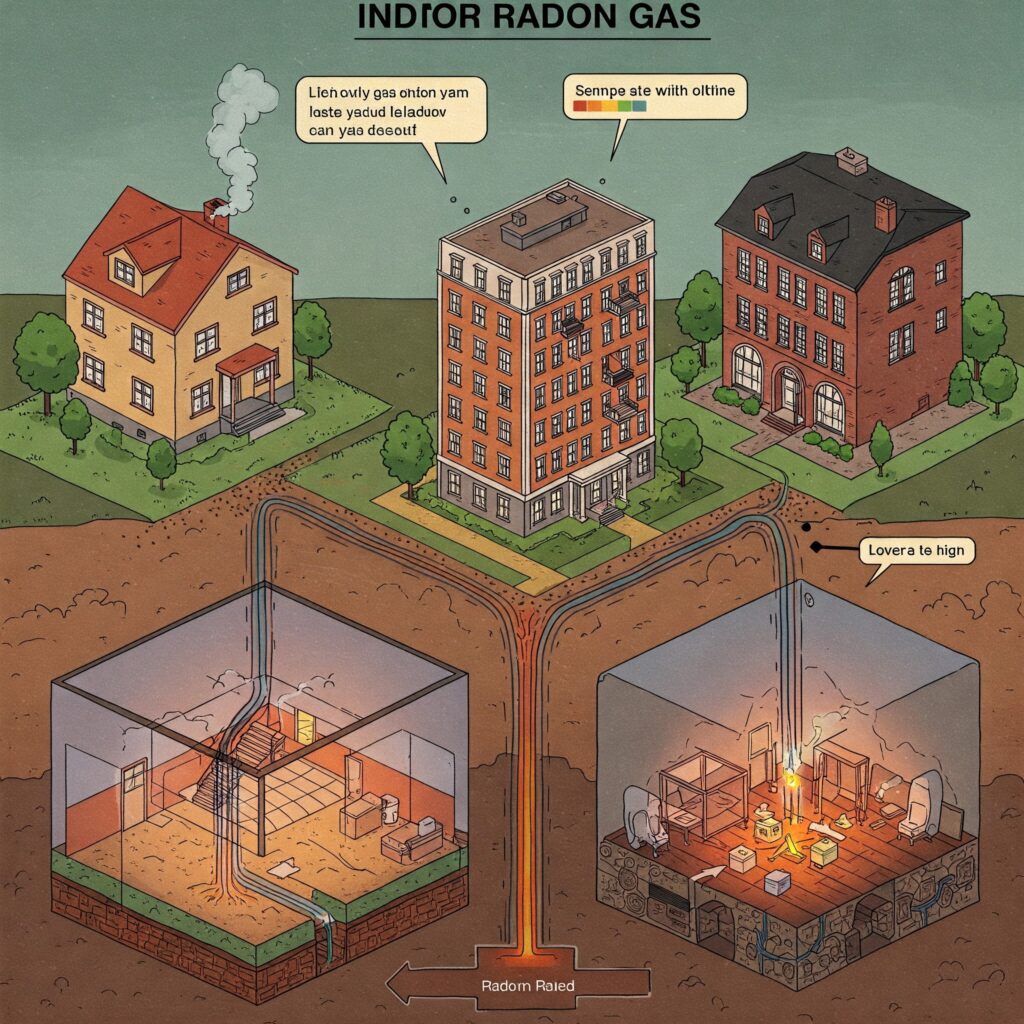What Is Radon Gas?
Radon is a naturally occurring radioactive gas that results from the decay of uranium in soil and rock. It is colorless, odorless, and tasteless, making it difficult to detect without specialized testing. Radon gas can seep into buildings through cracks in floors, walls, and foundations, accumulating to dangerous levels and posing serious health risks.
Health Risks of Radon Exposure
Prolonged exposure to radon gas is a leading cause of lung cancer, second only to smoking. The radioactive particles released by radon decay can damage lung tissue when inhaled, increasing the risk of cancer over time. According to health agencies like the EPA and WHO, any radon level above 4 pCi/L (picocuries per liter) requires mitigation to ensure a safe indoor environment.
Types of Buildings Affected by Radon Gas
Radon can infiltrate various types of buildings, but some structures are more susceptible due to their foundation type, ventilation, and construction materials.

- Residential Homes
- Single-Family Homes: Houses with basements or crawl spaces are particularly vulnerable to radon infiltration because gas can easily enter through foundation cracks and gaps. Homes built on slabs may also be affected if radon permeates through the floor.
- Multi-Story Homes: While radon concentration is typically highest in lower levels, it can spread throughout the entire house through ventilation and heating systems.
- Apartment Buildings and Condominiums
- Ground-floor and basement units tend to have higher radon levels compared to upper floors.
- Older apartment buildings with poor ventilation or cracks in the foundation are at greater risk.
- Commercial Buildings and Offices
- Office buildings with inadequate ventilation systems can trap radon, leading to long-term exposure for employees.
- Buildings with underground parking garages or basements may have higher radon levels due to direct exposure to soil gases.
- Schools and Educational Institutions
- Schools, especially those with ground-level classrooms, can accumulate radon if not properly ventilated.
- Older buildings may lack the necessary mitigation systems, making regular radon testing essential for student and staff safety.
- Industrial and Warehouse Facilities
- Large-scale warehouses with concrete flooring and poor air circulation may trap radon gas.
- Facilities built on high-radon areas should conduct regular air quality testing to ensure safety.


